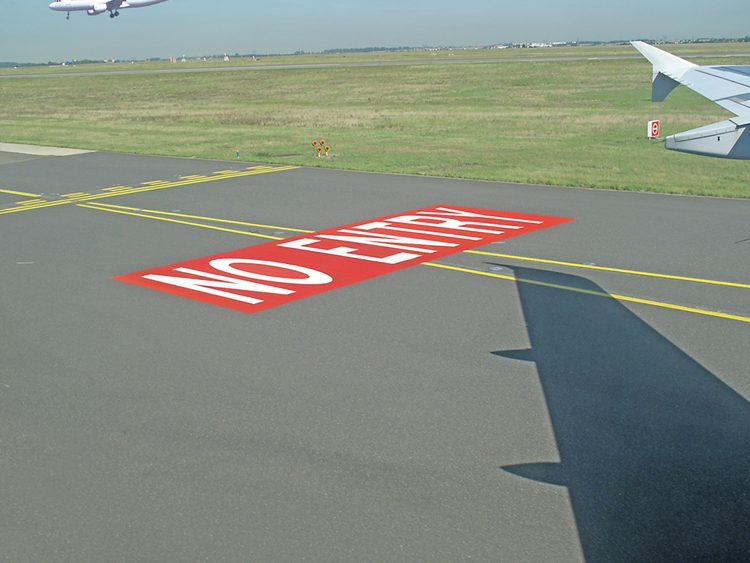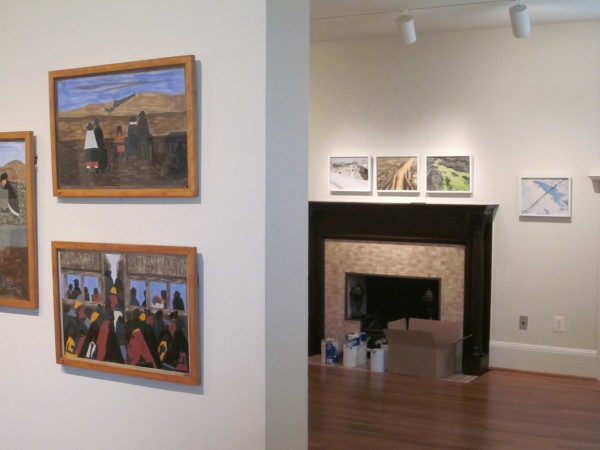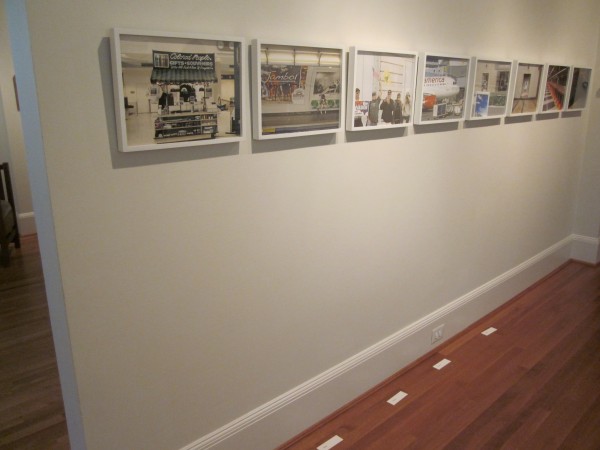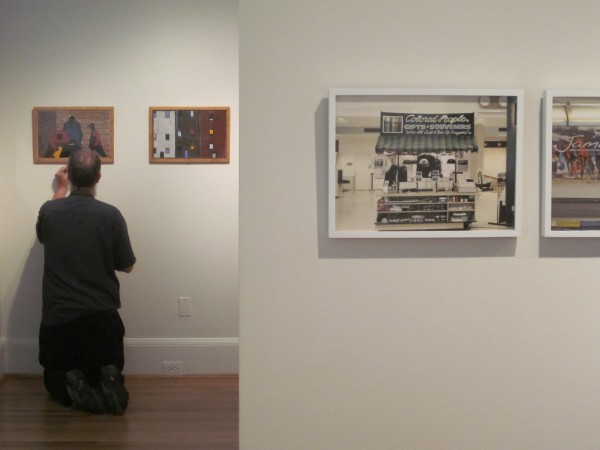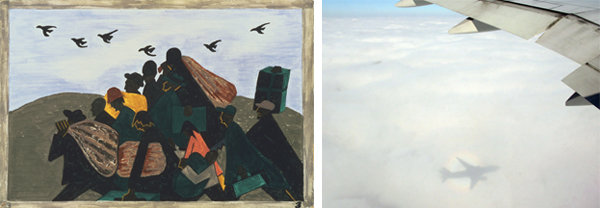
(left) Jacob Lawrence, “The Migration Series, Panel no. 3: From every southern town migrants left by the hundreds to travel north.”, 1940-41. Casein tempera on hardboard, 12 x 18 in. The Phillips Collection, Washington, D.C. © 2010 The Jacob and Gwendolyn Lawrence Foundation, Seattle / Artists Rights Society (ARS), New York. (right) Allan deSouza, “Specter” from “The World Series, 2010-11.” Courtesy of the artist and Talwar Gallery, New York / New Delhi.
A recent review by Philip Kennicott of photographer Allan deSouza’s installation, The World Series, which responds to Jacob Lawrence’s The Migration Series, prompted me to take a second look at the artwork and jot down my thoughts.
Kennicott writes of deSouza’s work’s “. . . (perhaps unconscious) appeal to the class of people who travel, who are rich and privileged enough to enjoy the sweet dislocation of life in multiple time zones.” Indeed, about half of the photographs in deSouza’s installation are of airborne postmodern travel, with the gray concrete and glass ubiquity of airports or shot from an airplane window, with no clear indication whether the image was shot in Jakarta, Prague, Paris, or Milwaukee.
It is in this visual continuity of deSouza’s images of air travel–with their dominant color and style of photographic gray–that I find an interesting parallel with Lawrence’s The Migration Series. The visual equivalent to deSouza’s grey is Lawrence’s use of brown, frequently painted with a dry brush, which the artist used to suggest the wooden floor of southern shotgun shacks, parched fields ravaged by drought or boll weevils, or the interior of railroad cars and train stations. Lawrence’s browns are a base color that evokes the depleted South that African Americans departed in droves.
DeSouza’s photographs and their glossy grays with metallic highlights and reflective surfaces express the 21st century world through which one travels (migrates). And while for many museum-goers and art critics, deSouza’s photographs may suggest the “sweet dislocation of modern life,” for today’s migrants they might suggest the alien world in which one travels to escape oppression and seek opportunity. Continue reading →

